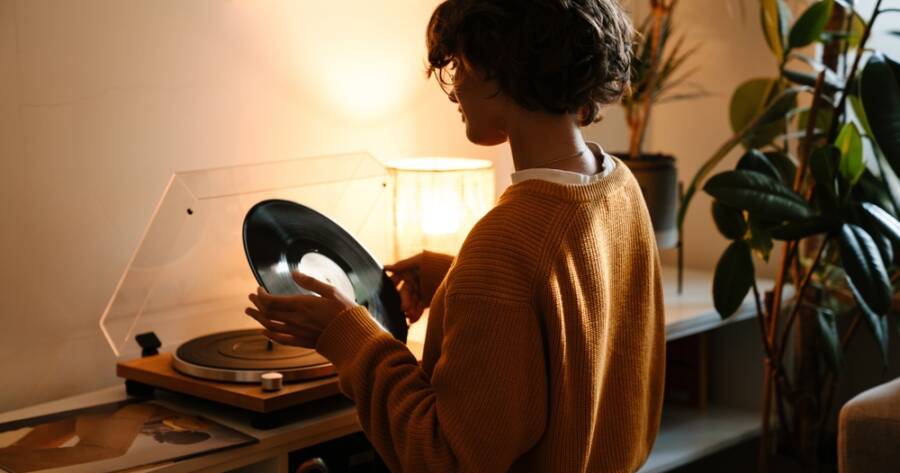In a world dominated by touchscreens, streaming, and instant updates, a surprising movement is unfolding — the quiet return of analog hobbies. People are rediscovering the joy of tangible, hands-on pastimes that existed long before apps and algorithms. From vinyl records and film photography to fountain pens and printed books, analog pursuits are experiencing a cultural revival. Their appeal lies not in nostalgia alone, but in the deep satisfaction that comes from slowing down and creating something real.
The Allure of the Tangible
The modern digital experience is efficient but often fleeting. Scrolling through content, swiping photos, or streaming songs provides convenience, but little permanence. Analog hobbies offer something that digital life can’t replicate — texture, patience, and physical connection.
Take vinyl records, for example. Listening to an album on a turntable requires deliberate attention: placing the needle, flipping the record, and hearing the subtle imperfections that make each play unique. For many, this process transforms listening from a background activity into a ritual. The same holds true for film photography, where each shot carries weight because it can’t be instantly deleted or retaken.
In an era of abundance and automation, the tangible nature of analog hobbies restores a sense of value. Every print developed, record spun, or sketch drawn by hand feels earned. That tactile engagement fosters mindfulness, turning simple activities into acts of presence.
Old Tools, New Generations
What’s striking about the analog revival is that many of its enthusiasts are digital natives — younger generations raised on smartphones who are now exploring technologies from their grandparents’ time. Vintage cameras, typewriters, and even board games have become symbols of authenticity in an increasingly virtual world.
For these younger users, analog tools offer a refreshing contrast to their daily digital routines. Film cameras, for instance, slow down the act of photography. Without the instant feedback of a screen, photographers must think through composition, light, and timing before pressing the shutter. The reward comes later — when the film is developed and the images reveal small surprises that no filter could imitate.
Similarly, letter writing has found new life among those who crave deeper forms of communication. The simple act of handwriting a note with pen and paper can feel more personal and lasting than any message sent through an app. Fountain pens, wax seals, and high-quality stationery have all seen renewed interest, not as status symbols but as tools for intentional expression.
Vinyl, Books, and the Comfort of Ritual
Among the strongest examples of analog revival is the enduring appeal of vinyl records. Independent record stores have multiplied in major U.S. cities, serving as community spaces where music lovers browse, discuss, and trade. Listening to vinyl isn’t just about sound quality — it’s about ritual. The act of selecting a record, handling the sleeve, and hearing the faint crackle before the music begins creates a sensory experience that digital playlists can’t match.
Books, too, have proven resilient. Despite e-readers and audiobooks, printed books continue to attract readers who value the feel of paper and the visual comfort of a well-designed cover. Independent bookstores have even seen modest growth in recent years, thanks to readers seeking both connection and escape from screens.
These rituals — flipping pages, setting a needle, writing by hand — remind us that creativity and enjoyment don’t always need optimization. They thrive on attention, patience, and touch.
The Rise of DIY and Craft Culture
Another aspect of the analog comeback is the surge in do-it-yourself and craft hobbies. Knitting, woodworking, painting, and pottery have all regained traction among people looking to engage their hands and minds in tangible creation. Social media has played an ironic role here: while digital platforms may have fueled the rediscovery of crafts, the activities themselves take participants offline.
Workshops, local maker spaces, and community studios across the country now offer classes that reconnect people with traditional skills. These spaces provide more than creative instruction — they foster community. In contrast to the isolating nature of online engagement, hands-on hobbies encourage face-to-face interaction and shared learning.
For many Americans, crafting has become a counterbalance to digital burnout. It’s not about rejecting technology but about reclaiming balance — using the digital world for inspiration, then stepping away from the screen to create something with lasting presence.
Finding Meaning in Slower Moments
The return to analog hobbies reflects a deeper cultural shift: a desire to slow down and rediscover meaning in everyday life. Whether it’s spinning a record, stitching fabric, or shooting a roll of film, these activities demand time and patience. They invite reflection, imperfection, and process — qualities often missing from digital life, where speed and efficiency dominate.
In a time when work and leisure both unfold online, analog hobbies create space to unplug without disconnecting from creativity or curiosity. They provide grounding in a fast-moving world, offering small but powerful reminders of what it means to experience life through all the senses.
Rediscovering the Human Touch
The rebirth of analog hobbies isn’t about turning back the clock; it’s about moving forward with greater awareness. In embracing the tactile, the imperfect, and the slow, people are reclaiming experiences that digital convenience nearly erased.
These hobbies remind us that the joy of creating, listening, or reading isn’t just about the end result — it’s about the process itself. As technology continues to advance, the analog revival stands as a quiet revolution, proving that in the age of the virtual, the human touch still matters most.

